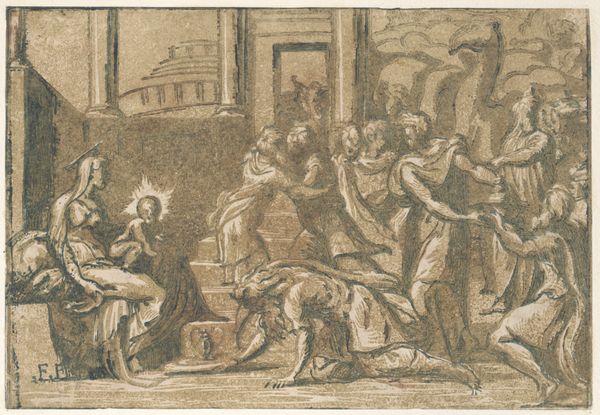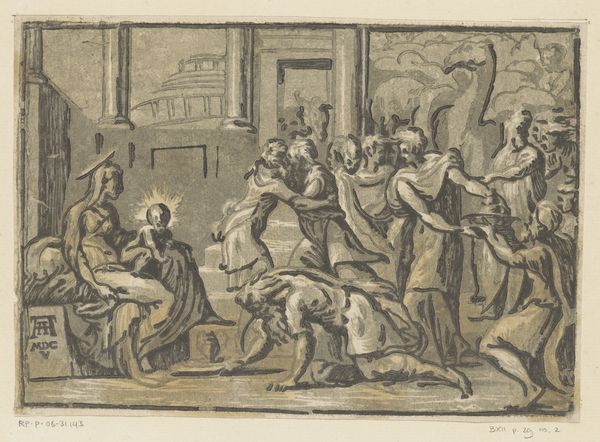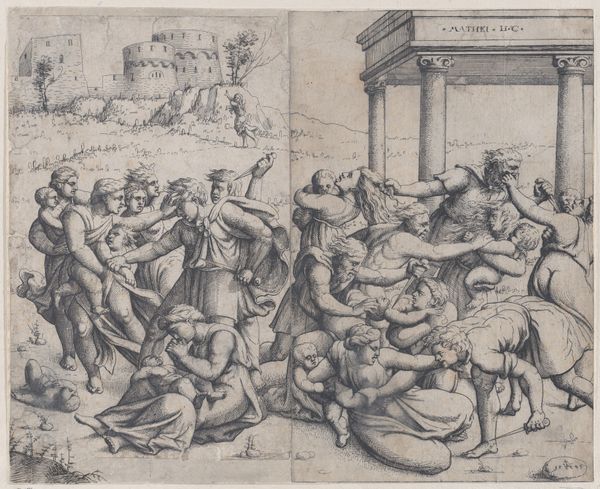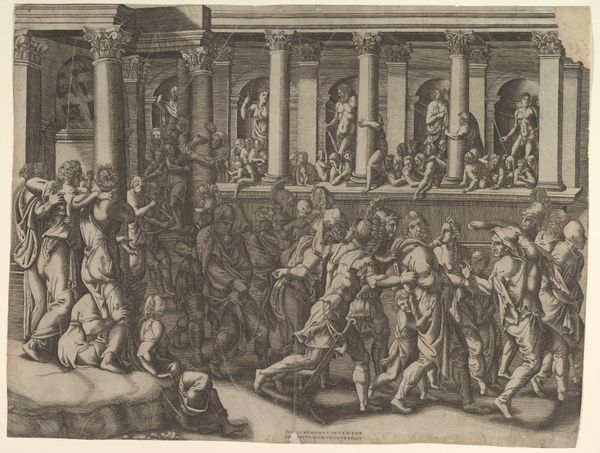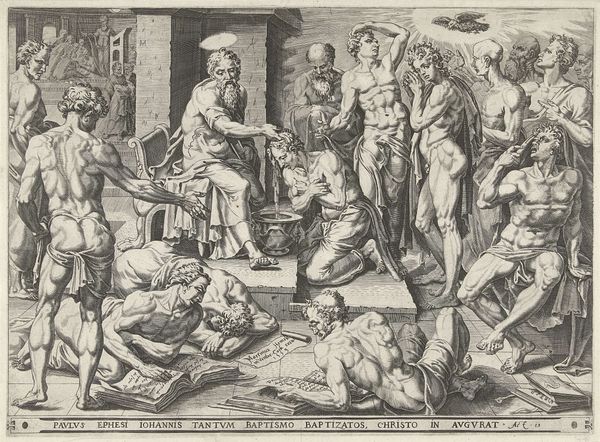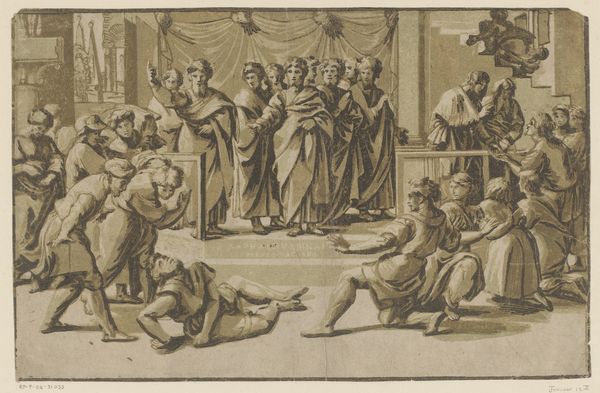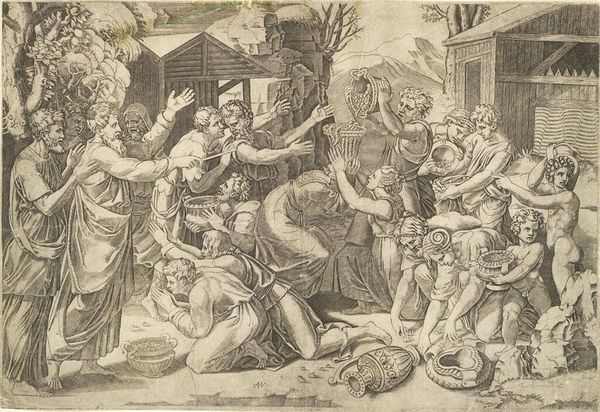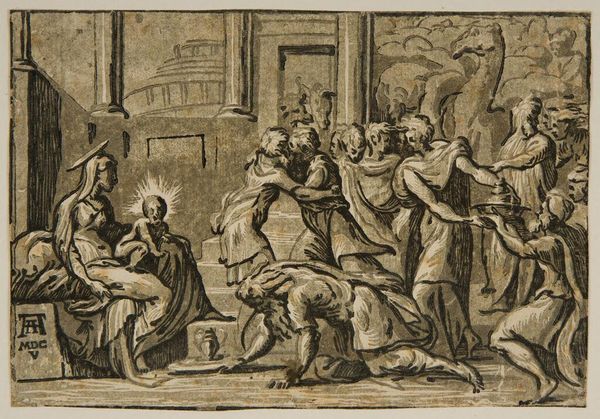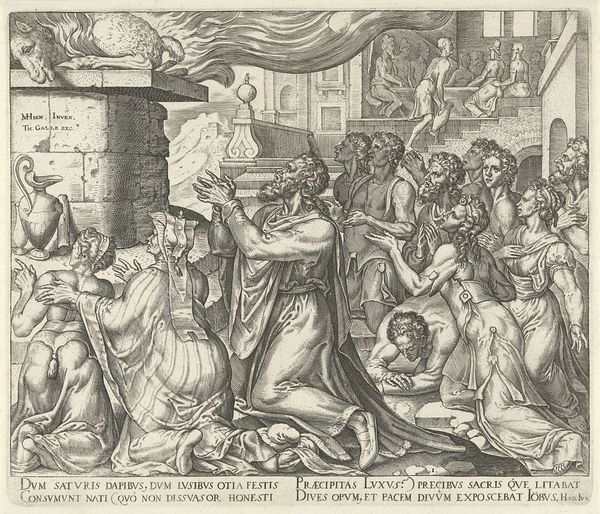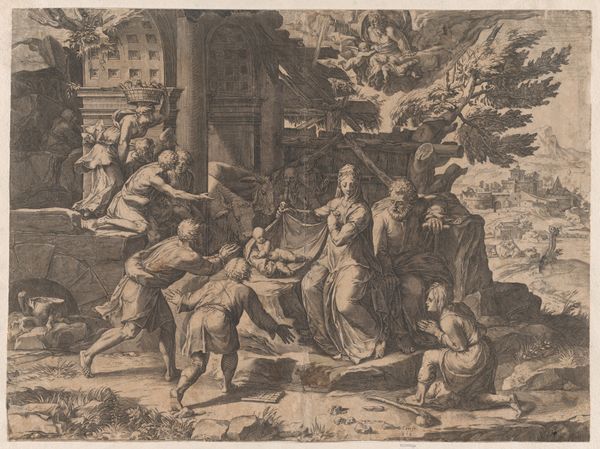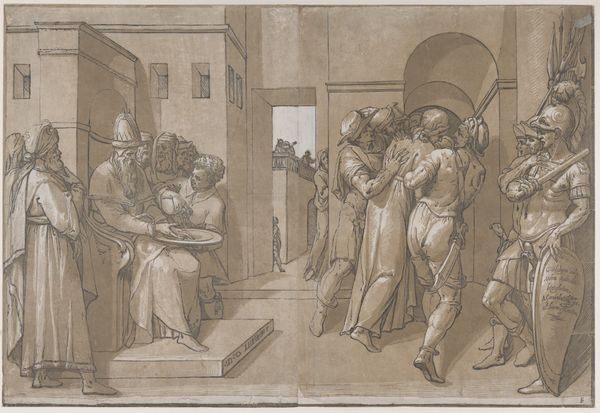
drawing, print, intaglio, ink
#
drawing
#
ink drawing
#
narrative-art
#
pen drawing
# print
#
pen illustration
#
pen sketch
#
intaglio
#
figuration
#
ink
#
history-painting
#
italian-renaissance
Dimensions: Sheet: 6 1/8 × 9 7/16 in. (15.5 × 24 cm)
Copyright: Public Domain
Curator: What strikes me first is the intimacy, the smallness, like a captured memory in ink. Editor: And what a powerful memory, encapsulated in Niccolò Vicentino's “The Adoration of the Magi,” dating back to the mid-16th century. This intaglio print on paper portrays a timeless scene laden with sociopolitical implications of the time. Curator: Absolutely. Look at how Vicentino uses ink to create such depth and movement! The layering feels almost frenetic. It gives this iconic narrative a pulse. Notice the Madonna—a central, almost unwavering figure bathed in light emanating from her divine son— juxtaposed against the shadows behind her and to the right. Editor: Indeed. We must acknowledge this familiar scene in its historical setting, acknowledging that depictions of adoration also inadvertently visualized hierarchy. How the economic and political landscape may influence these renderings of power, privilege, race, and class at a historical moment of immense inequality? The gifts that were brought before the divine could themselves have acted as stand-ins for the complex web of trade, extraction, and empire-building taking place beyond the image's borders. Curator: That’s a rich layer of context. What I also notice is how carefully Vicentino balances classical elements – look at that almost Greek architecture in the background - with a sense of burgeoning Renaissance dynamism. It’s as though the scene exists both within and beyond its specific moment. The figures' faces appear so contemporary! Editor: Right, the symbolism isn't just about reverence, but also about power and influence at this cultural nexus. By interlacing the Biblical subject matter with Italian aesthetic values and forms of the era, "The Adoration" functions as an eloquent assertion of religious power that is inevitably steeped in worldly ambition and concerns. Curator: So well observed. And perhaps a comment on that blending – on how our symbols and beliefs are always interwoven with the concerns of their time? Editor: A fitting message, perhaps especially now. It underscores how every devotional gesture has to contend with the structures around it. That negotiation should always invite our interrogation. Curator: Leaving us to continuously decode and question the images that surround us. Editor: Precisely, inviting viewers to participate critically in deciphering power dynamics embedded within such images.
Comments
No comments
Be the first to comment and join the conversation on the ultimate creative platform.
